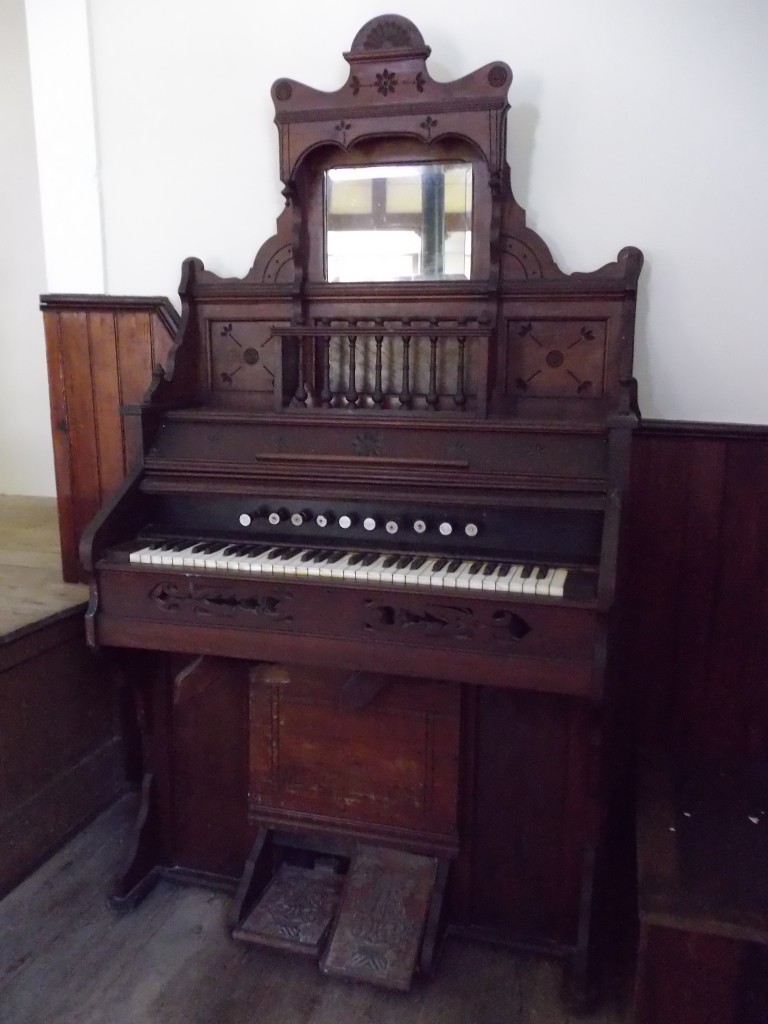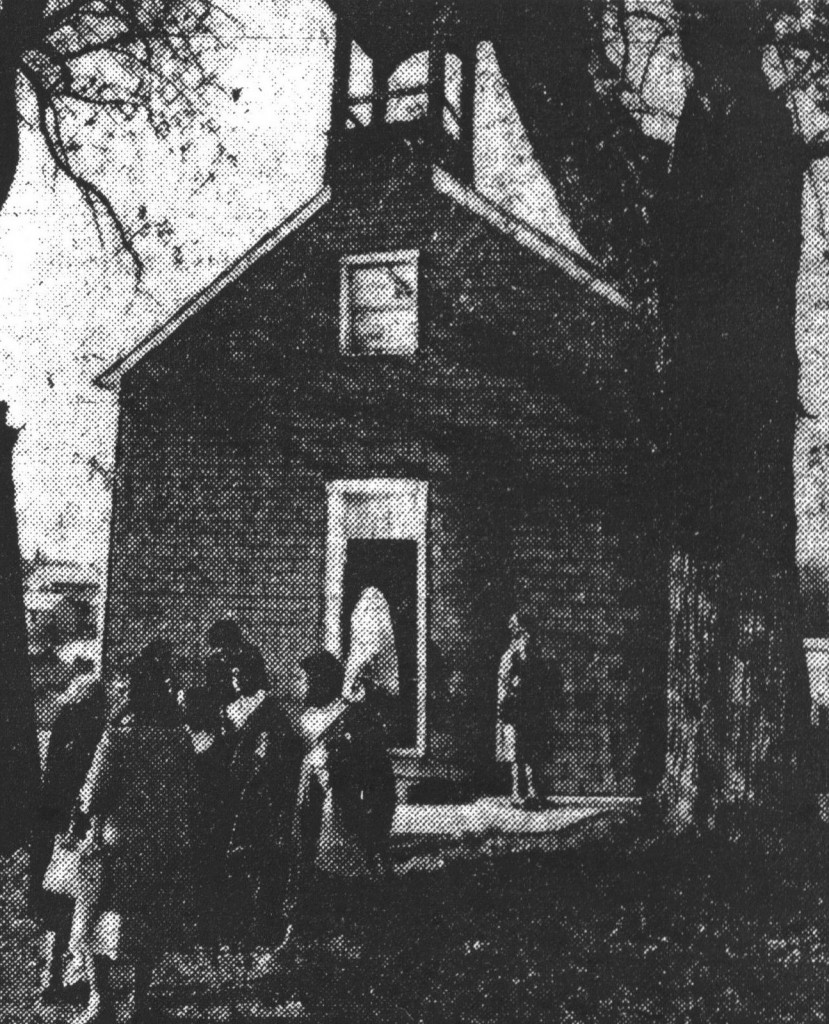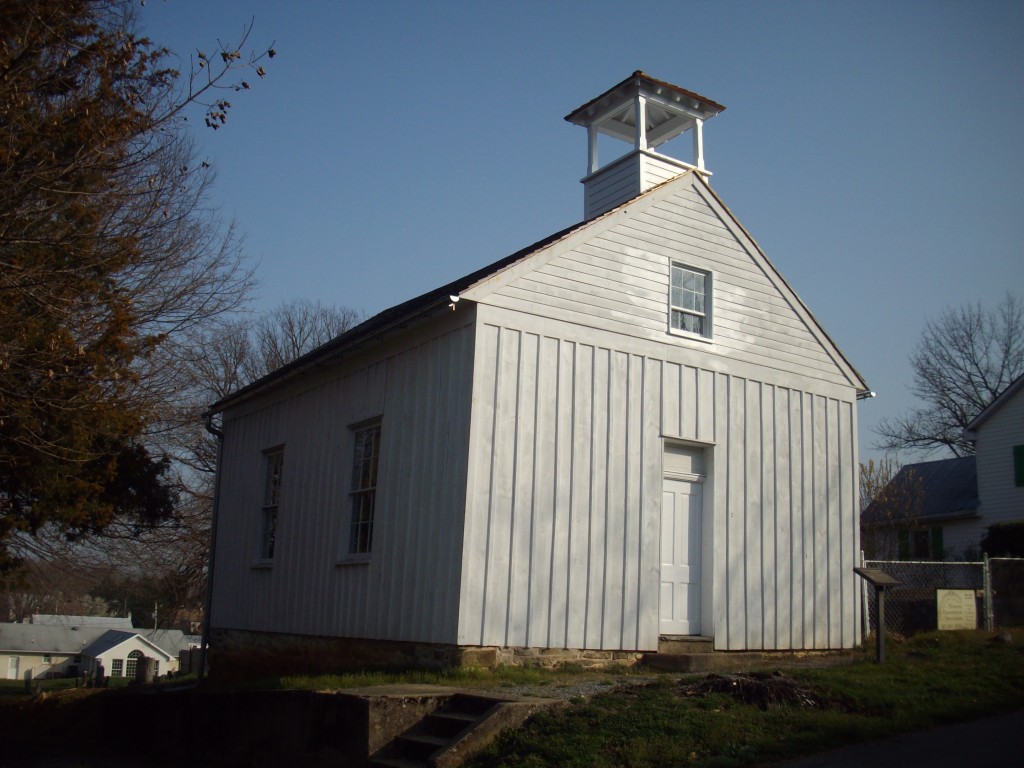Timeline
1864 – Emancipation of Maryland slaves; Methodist Episcopal Church established the Washington Conference, “providing for the organization of Mission Annual Conferences for the Colored people belonging to said church.” (Minutes of the Washington Conference, Lovely Lane Museum and Archives, Baltimore, MD)
1865 – In 1865 and 1866, John R. Tolson was assigned to the Hagerstown Circuit or Station by the Washington Conference. (Minutes of the Washington Conference)
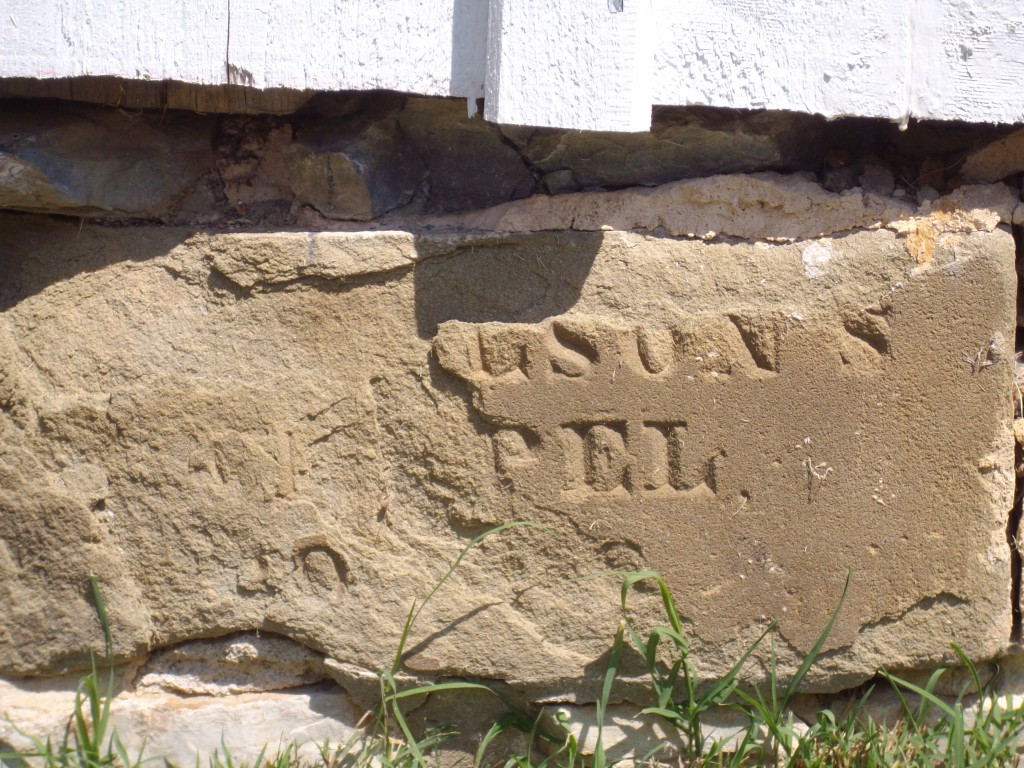 1866 – Cornerstone laid for Sharpsburg “African Church,” to be finished “about the holidays.” (Boonsboro Oddfellow, November 29, 1866) Corner-post log construction with diagonal braces.
1866 – Cornerstone laid for Sharpsburg “African Church,” to be finished “about the holidays.” (Boonsboro Oddfellow, November 29, 1866) Corner-post log construction with diagonal braces.
1867 – John R. Tolson was transferred to the Winchester Circuit. The Chapel was dedicated in October 1867 (Scharf, p. 1210). Samuel Craig (Crague) deeded part of Lot 104 on High Street to the trustees of the Methodist Episcopal (M.E.) Church, including himself, David Simon, Wilson Middleton, Jacob Turner, and John Francis. The deed, dated the 15th of November 1867, indicates the conveyance occurred a full year after the chapel was constructed and occupied, “…containing 35 feet in length and 25 feet in width…together with all the buildings and improvements thereonto…” (Washington Co. Land Record, Liber LBN 1, folio 712)
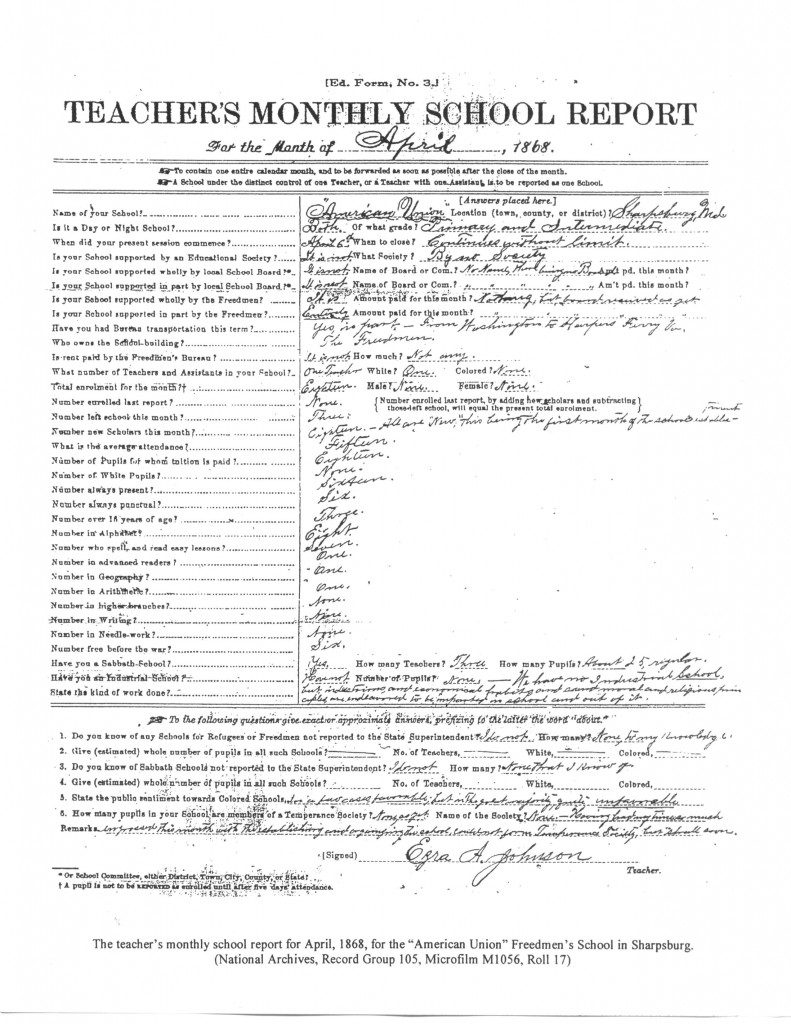 1868 – March, Capt. J.C. Brubaker, in charge of the Freedmen’s Bureau in the Harpers Ferry Region, arranged for a teacher for a Freedmen’s Bureau School in Sharpsburg. (Letter, Capt. J.C. Brubaker to Kimball, Supt. Of Education, March 28, 1868, National Archives, M2056, Roll #5).
1868 – March, Capt. J.C. Brubaker, in charge of the Freedmen’s Bureau in the Harpers Ferry Region, arranged for a teacher for a Freedmen’s Bureau School in Sharpsburg. (Letter, Capt. J.C. Brubaker to Kimball, Supt. Of Education, March 28, 1868, National Archives, M2056, Roll #5).
In April, Ezra A. Johnson, a white teacher from Philadelphia, arrived in Sharpsburg and opened the “American Union” school on April 6, 1868. Johnson’s April report submitted to the Freedmen’s Bureau Education department: grades taught included both primary and intermediate. The school was not supported by any “Educational Society,” or by the local school board, but that it was “wholly supported by the Freedmen.” The Bureau did not pay the Freedmen any rent for use of the church building as a school. Total enrollment for the month was listed as 18 students, equally divided between male and female, and of those, 16 were described as “always present.” And of the 18 day students, only six were listed as “free before the war,” meaning 12 of the children were previously enslaved. Eight knew the alphabet; seven “spell and read easy lessons”; and one was an advanced reader, knew geography and arithmetic. The Sabbath school had three teachers and “about 25 regular” students. (Sharpsburg Freedmen’s Bureau School Reports, April 1868-August 1869, M1056, NARA). Probable first application of “liquid slate” on the chapel interior walls.
1869 – 25 students at “American Union” school studied under a new teacher provided by the Freedmen’s Bureau, John J. Carter, who reported “They learn very fast.” (Teacher’s Monthly School Report, July and August, 1869, National Archives, M1056, Roll #17)
1870 – John R. Tolson died at the age of 30. (John R. Tolson Memoir/obituary, Methodist Episcopal General Minutes, Vol. XIII, 1870-1871, p. 37) It is likely the Sharpsburg chapel was dedicated to Tolson shortly after his death in 1870. Daniel Aquilla serving as preacher at Sharpsburg. (Preachers File, Lovely Lane Museum). Congress discontinued the Freedmen’s Bureau operations. Maryland county school boards now fully responsible for the education of black children.
1871 – Sharpsburg Colored School trustees appointed by the Washington County School Board, T.H. Sliner, George Hopewell, and Nathan Keller. (Washington Co. School Board Minutes 1865-1908). “Hagerstown & Sharpsburg Circuit” was served by Philip Scott. The Sharpsburg “station” listed 25 members, 2 deaths, 6 probations, 0 local preachers, 0 adult baptisms, 10 child baptisms, 1 church with a $400 probable value, 0 parsonage, 2 Sunday schools, 9 officers & teachers, and 55 [Sunday school] scholars. (Minutes of the Washington Conference)
1872 – Preacher Daniel Aquilla was assigned to the “Williamsport & Sharpsburg Circuit.” Sharpsburg “station” listed 12 members, 1 death, 6 probationers, 1 adult baptism, 12 child baptisms, 1 church with $600 value, “Benevolent Contributions”- “For Missionary Society…Churches $150…Sunday Schools $100”, 2 Sunday schools, 4 officers & teachers, 20 scholars, and 20 volumes in library. (Minutes of the Washington Conference)
1873 – Jacob M. Gross was stationed at Sharpsburg. Committee on Missions recommended $100 be given to Sharpsburg (Chesapeake District), a relatively large sum compared to others that were mostly $25-50. (Minutes of the Washington Conference)
1874 – New Sharpsburg Colored School trustees appointed were Andrew N. Malone, Hilleary [sic] Watson, and J. [Jacob] M. Gross. Also the first record of a teacher confirmed by the county for the Sharpsburg Colored School, David Samons (Simons), although it is likely that Simons taught at the school for the years between the demise of the Freedmen’s Bureau and his confirmation in 1874. (Washington Co. School Board Minutes). The Sharpsburg “station,” served by preacher Jacob M. Gross, had 37 members, 19 probationers, 3 deaths, 4 child baptisms, 1 church valued at $700, 1 Sabbath school, 5 officers & teachers, and 45 scholars. (Minutes of the Washington Conference)
1875 – Several Sunday School Hymnals found in the chapel were inscribed “Sharpsburg T C 1875,” possibly indicating the earliest date recorded for the use of the Tolson’s Chapel name. (Listed in the “Inventory of Artifacts found in Tolson’s Chapel,” Dr. David H. Wallace, February 27, 2003)
1876 – August, the School Board appropriated “the following sums as rent for the school houses,” including $15 for S.D. (School District) 4 of E.D. (Election District) 1, the designation given to Sharpsburg Colored School. (Washington Co. School Board Minutes)
1877 – Sharpsburg Colored School trustees appointed, David Samons (Simons), Hilary Watson and George Tyler. (Washington Co. School Board Minutes). Atlas Map of Sharpsburg showed the chapel building in the southwest corner of Lot 104. (Titus & Co., “Atlas Map of Washington County, Maryland,” 1877)
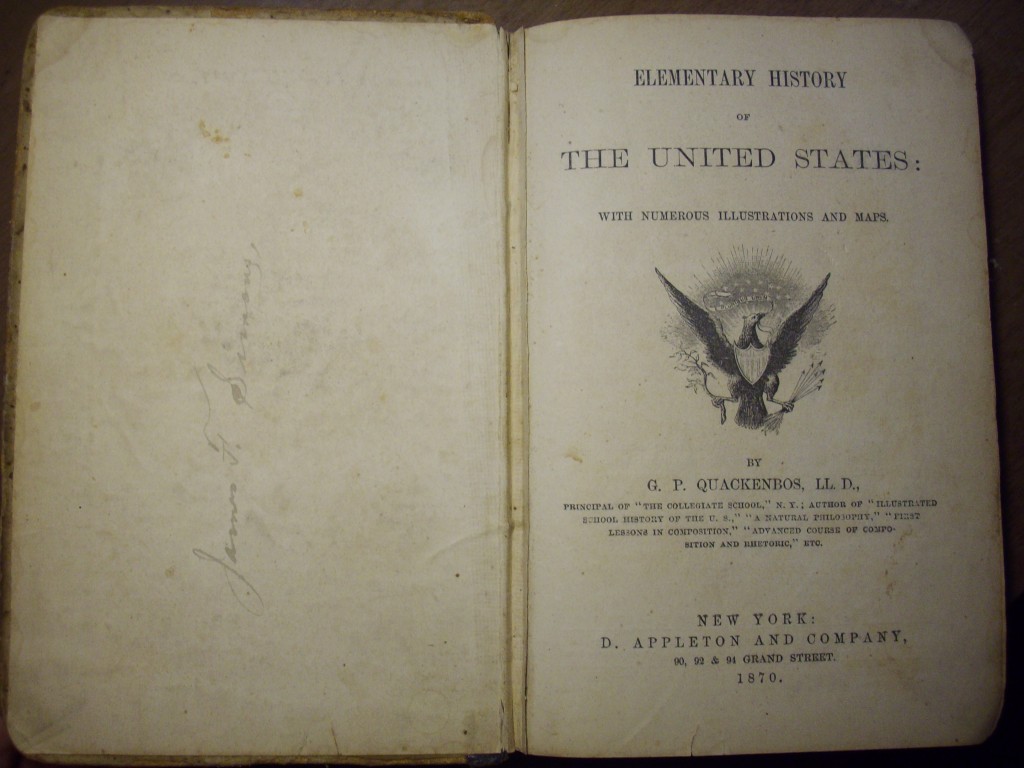 1879 – James F. Simons (Samons) was confirmed as the teacher, following two years of service by George W. Smith. (Washington Co. School Board Minutes
1879 – James F. Simons (Samons) was confirmed as the teacher, following two years of service by George W. Smith. (Washington Co. School Board Minutes
1881 – The local newspaper reported a festival being held at “Tolson’s M.E. Church.” This is the earliest documented reference to the building being called “Tolson’s.” (Sharpsburg Enterprise, Dec. 23, 1881) . Report for County Colored School No. 4 in Sharpsburg showed 22 pupils and James F. Simons as teacher. (Scharf, p. 976)
1882 – Benjamin W. Brown, Jr. (Williamsport Circuit) was serving a congregation of 35 at Sharpsburg. (Scharf, p. 1210; Preachers File, Lovely Lane Museum)
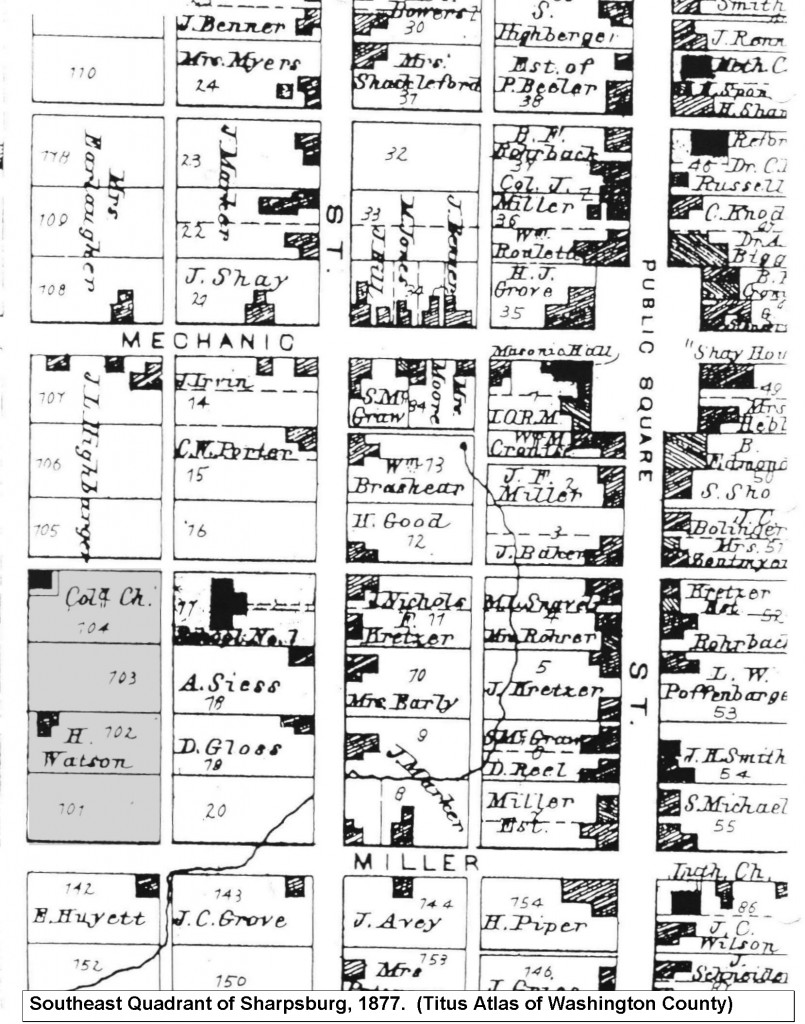 1883 – Dennis Harper sold the remaining west half of Lot 104 bordering the church to the then trustees, Hillary [sic] Watson, David B. Samons [sic], and William H. Gray, “in trust for the said Methodist Episcopal Church called Tolson’s Chapel.” The quarter acre lot was described, “…fronting 52 feet 10 inches on Said Street [High St.] and extending back to an alley…206 feet.” (Washington Co. Land Record, Liber GBO 84, folio 304) This was the cemetery lot.
1883 – Dennis Harper sold the remaining west half of Lot 104 bordering the church to the then trustees, Hillary [sic] Watson, David B. Samons [sic], and William H. Gray, “in trust for the said Methodist Episcopal Church called Tolson’s Chapel.” The quarter acre lot was described, “…fronting 52 feet 10 inches on Said Street [High St.] and extending back to an alley…206 feet.” (Washington Co. Land Record, Liber GBO 84, folio 304) This was the cemetery lot.
1888 – “Mehaley Thomas, age 100y[ears],” possibly the first marked burial in the Tolson’s Chapel cemetery. Although the stone does not include a date of death, Mahala Thomas’ death at the age of 104 was reported in the September 29, 1888 issue of the Antietam Wavelet.
1891 – Wilson Middleton died, “an aged and highly respected colored man and an ex-union soldier,” and was buried in the Tolson’s Chapel cemetery. (Antietam Valley Reporter, May 15, 1891) He was also among the original trustees of Tolson’s Chapel.
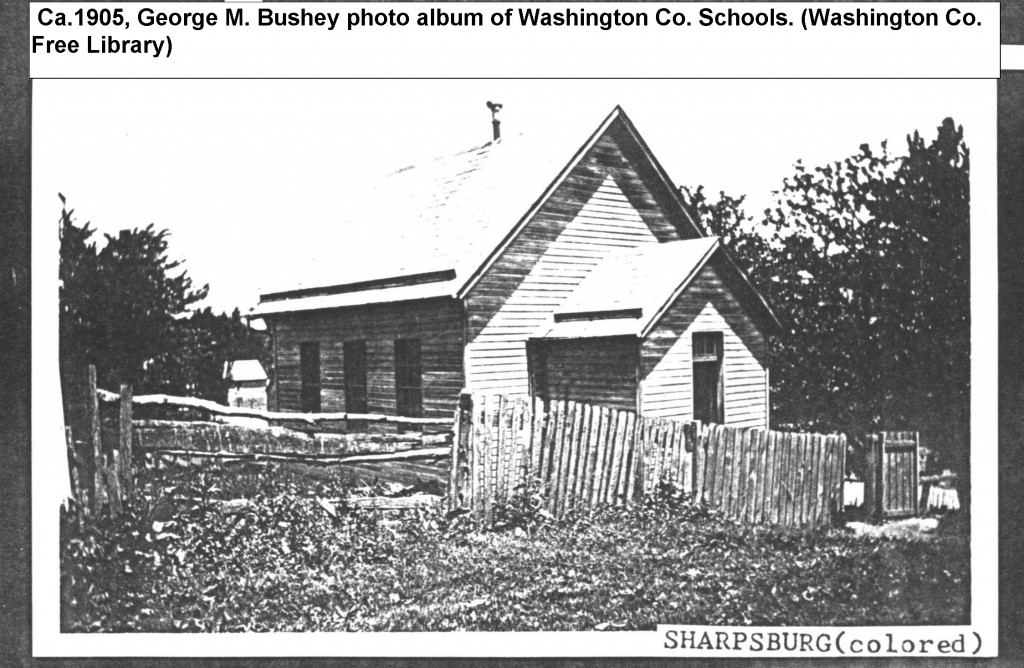 1899 – Washington Co. School Board paid $20 rent to “D.B. Samons, Treasurer” at the Sharpsburg Colored School in the chapel, at that time referred to as E.D. 1, S.D. 5. The county built a frame schoolhouse on the east end of E. High St. for Sharpsburg Colored School at a cost of $682, ending 31 years of operation in Tolson’s Chapel. (Washington Co. School Board Minutes)
1899 – Washington Co. School Board paid $20 rent to “D.B. Samons, Treasurer” at the Sharpsburg Colored School in the chapel, at that time referred to as E.D. 1, S.D. 5. The county built a frame schoolhouse on the east end of E. High St. for Sharpsburg Colored School at a cost of $682, ending 31 years of operation in Tolson’s Chapel. (Washington Co. School Board Minutes)
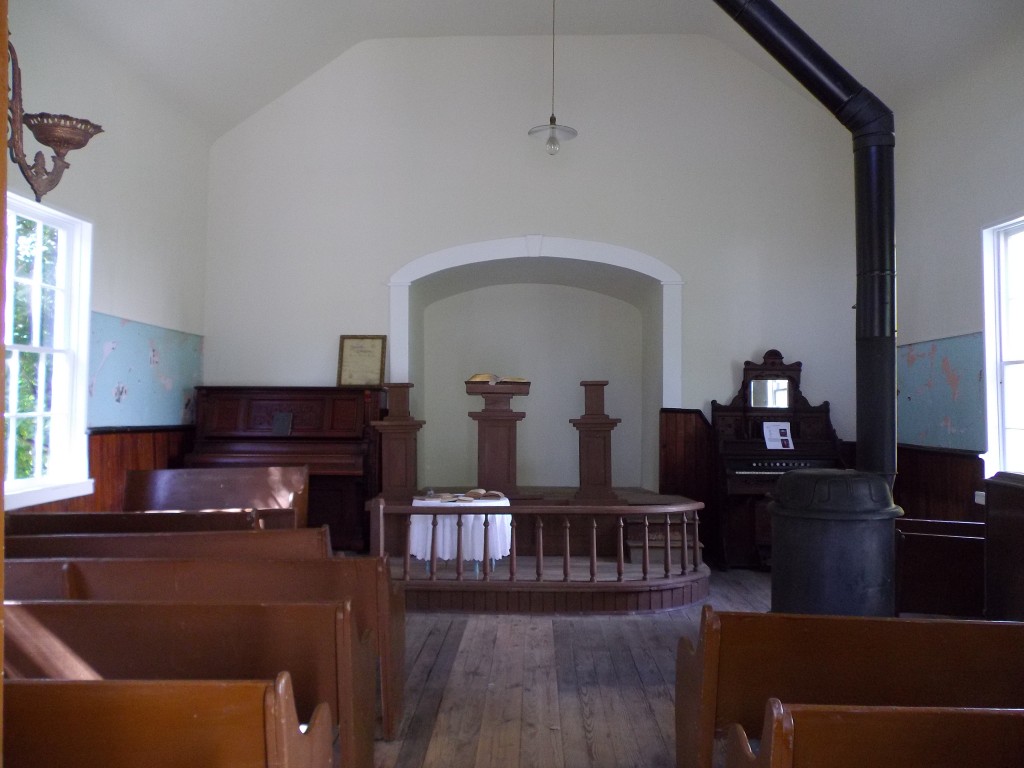 ca.1900 – Cast iron stove added, still using central chimney (probably replaced another stove).
ca.1900 – Cast iron stove added, still using central chimney (probably replaced another stove).
1901 – Tolson’s Chapel chapter of the Epworth League [youth group] established. (Certificate in chapel)
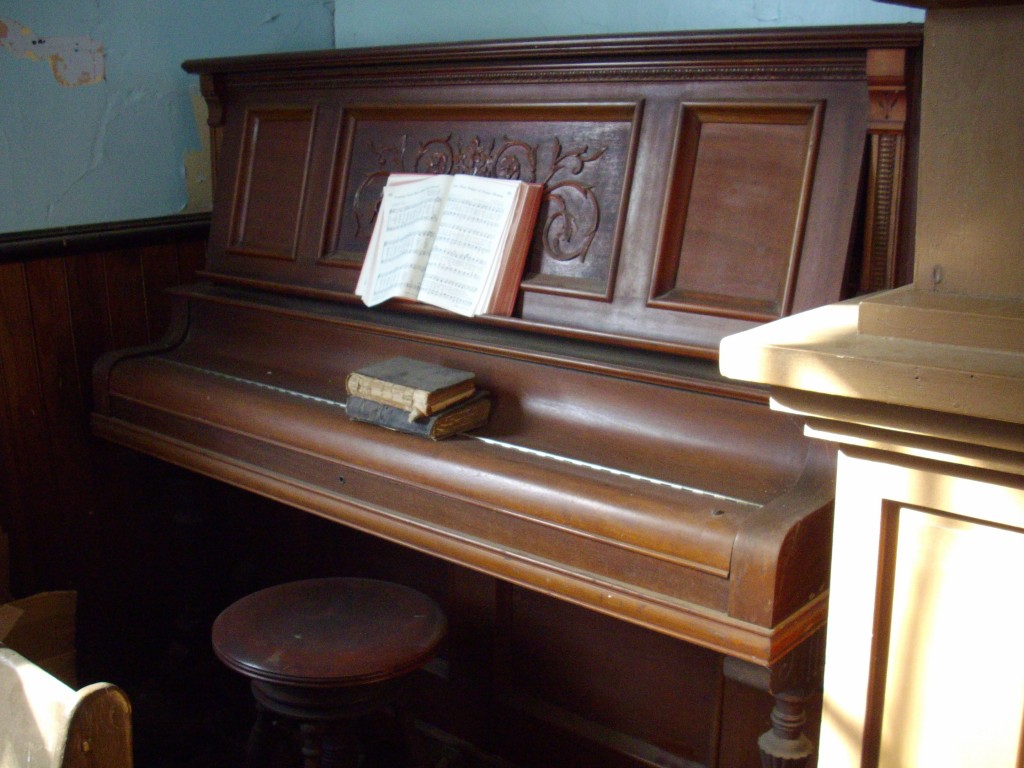 1908 – David B. Simons died at age 76; original trustee of Tolson’s Chapel and teacher at Sharpsburg Colored School in the chapel from 1874 (1870?) to 1877 and trustee of the school from 1877 through 1905 (not researched beyond that year).
1908 – David B. Simons died at age 76; original trustee of Tolson’s Chapel and teacher at Sharpsburg Colored School in the chapel from 1874 (1870?) to 1877 and trustee of the school from 1877 through 1905 (not researched beyond that year).
1908 – Piano made.
ca.1910 – New shingle roof applied around second belfry.
1911 – Rev. James F. Simons died; son of David Simons, teacher at Sharpsburg Colored School in the chapel from 1879 to 1899.
1917 – Hilary Watson died; former slave of John Otto, 1883 trustee of Tolson’s Chapel, and school trustee from 1874 through 1905 (not researched beyond that year).
1925 – Jeremiah Cornelius Summers died; former slave of Henry Piper and school trustee 1886-? (School Board records missing from 1887-1898).
Ca.1925 – Clarence Monroe added the wainscoting to the walls of Tolson’s Chapel. (Rev. Ralph Monroe, personal communication)
Ca.1930 – Electricity and wainscoting added
1940s – Asphalt shingles applied to building exterior by Clarence Monroe. Central chimney removed and exterior chimney built, metal roof applied. (Rev. Ralph Monroe, personal communication)
1955 – Mary E. (Lizzie) King (sister of James Simons?) devised in her will “One Hundred ($100.00) Dollars, for the express purpose of erecting a fence around the grave yard adjoining said Tolson Methodist Church,” and a chain link fence was therefore installed. (Washington Co. Will Book 23, page 18; Rev. Monroe, personal communication)
1976 – The local Hagerstown newspaper announced, “Sunday’s Rally Day services at Tolson’s Chapel in Sharpsburg drew a crowd of 30 – ten times the size of the little congregation’s membership.” Last members of the congregation still living in Sharpsburg included Virginia Cook, Clarence and Frances Monroe. The photograph shows the bell gone but the cupola still intact. Virginia Cook letter (n.d.) stated, “the cupola…got decayed and it wasn’t safe to hold the bell so Mr. [Clarence] Monroe took it down and it was sold to Douglas Reel.” Services were being held by a part-time preacher the first Sunday of every month although it was not clear whether they were held in the chapel or in the homes of the remaining congregants. (The Morning Herald, Nov. 8, 1976)
1977 – Clarence Monroe passed away. A WWII veteran, he was buried in the Tolson’s Chapel cemetery.
Ca. 1980 – Cupola removed.
Ca.1980 – Wood burning cast iron stove replaced by coal-burning Heatrola stove.
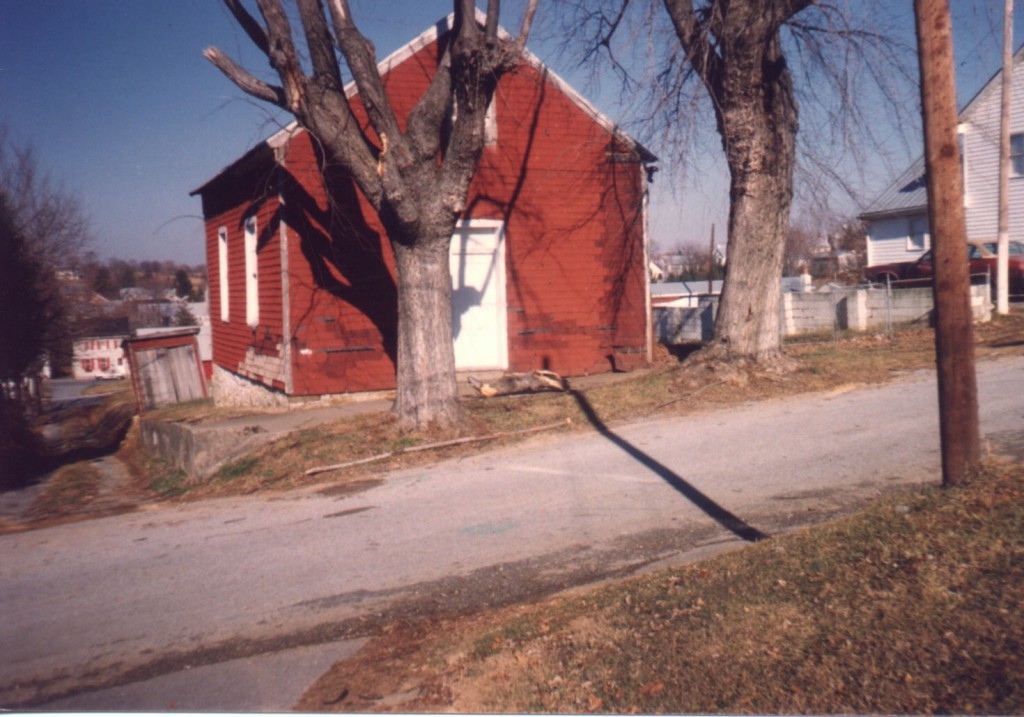 1988 – Photographs taken of the chapel from High St. show the double privy near the northwest corner of the building. The cupola was no longer on the chapel.
1988 – Photographs taken of the chapel from High St. show the double privy near the northwest corner of the building. The cupola was no longer on the chapel.
1994 – The Baltimore-Washington Conference of the United Methodist Church closed the chapel, citing the fact that the congregation had used the building only once a year for several decades.
1995 – Frances Monroe died and was buried in the chapel cemetery next to her husband Clarence. It was around this time that the two large trees in front of the chapel were cut down. (Rev. Monroe, personal communication). Rev. Ralph Monroe, son of Clarence and Frances Monroe, who grew up in the Tolson’s Chapel congregation, retired to his family home and took on the maintenance of the chapel cemetery.
1996 – Virginia Cook died. She was buried in the chapel cemetery in the Cook family plot but has no marker.
1997 – Having no congregation left, Tolson’s Chapel was deconsecrated by the Baltimore-Washington Conference of the United Methodist Church.
2000 – Dr. Dean Herrin, Director of the Catoctin Center for Regional Studies at Frederick Community College, uncovered the all-but-abandoned Tolson’s Chapel during a research project for Antietam National Battlefield. Under the guidance of Dr. Herrin, Catoctin Center interns researched and documented the Freedmen’s Bureau connection to the chapel.
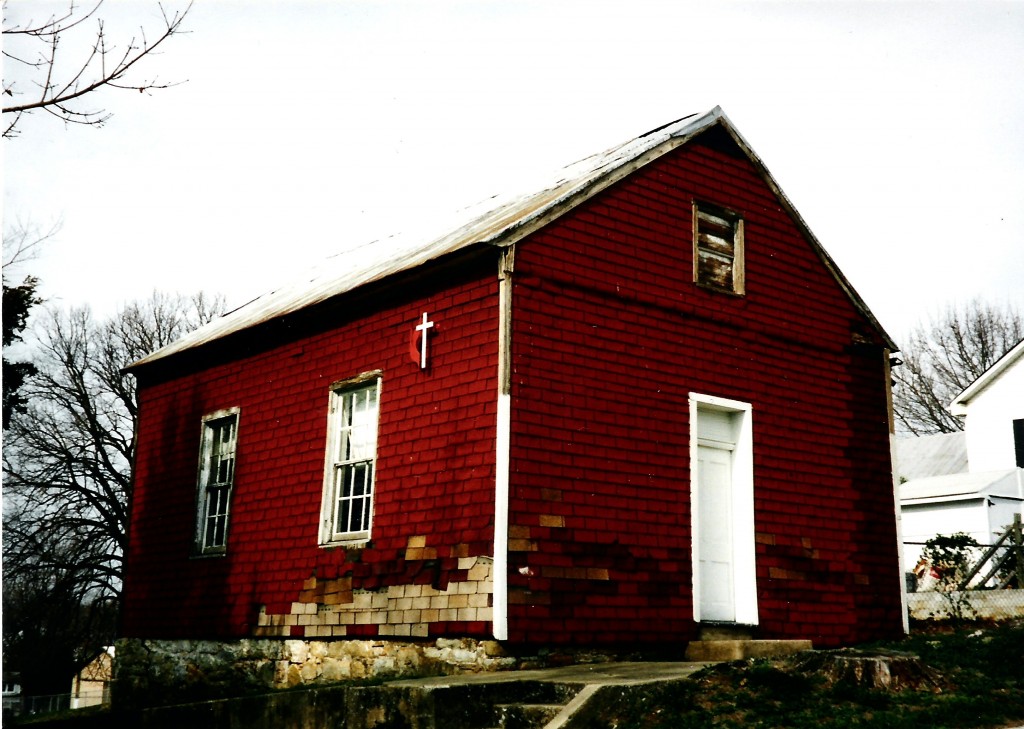 2002 – The Baltimore-Washington Conference of the United Methodist Church sold the building to a local preservation group, the Save Historic Antietam Foundation (SHAF). (Washington Co. Land Record, Liber 1786, folio 503)
2002 – The Baltimore-Washington Conference of the United Methodist Church sold the building to a local preservation group, the Save Historic Antietam Foundation (SHAF). (Washington Co. Land Record, Liber 1786, folio 503)
2006 – Friends of Tolson’s Chapel (FOTC) established as a 501(c)(3) non-profit association dedicated to the restoration and interpretation of Tolson’s Chapel.
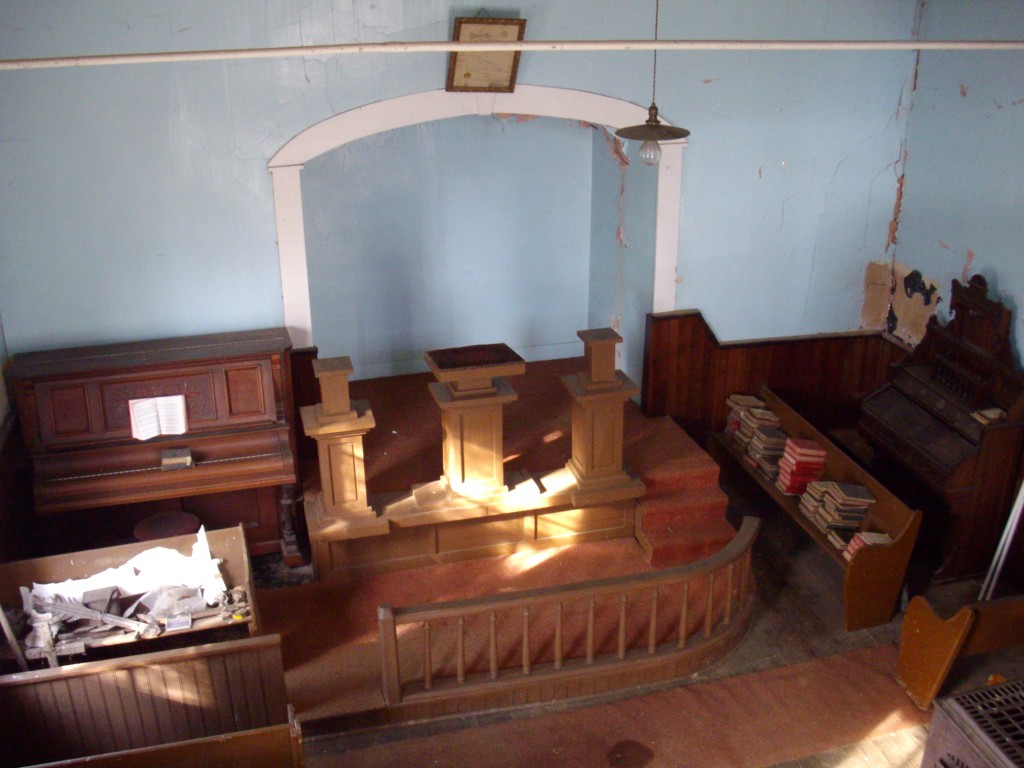 2008 – Deed for Tolson’s Chapel and cemetery transferred from SHAF to FOTC.
2008 – Deed for Tolson’s Chapel and cemetery transferred from SHAF to FOTC.
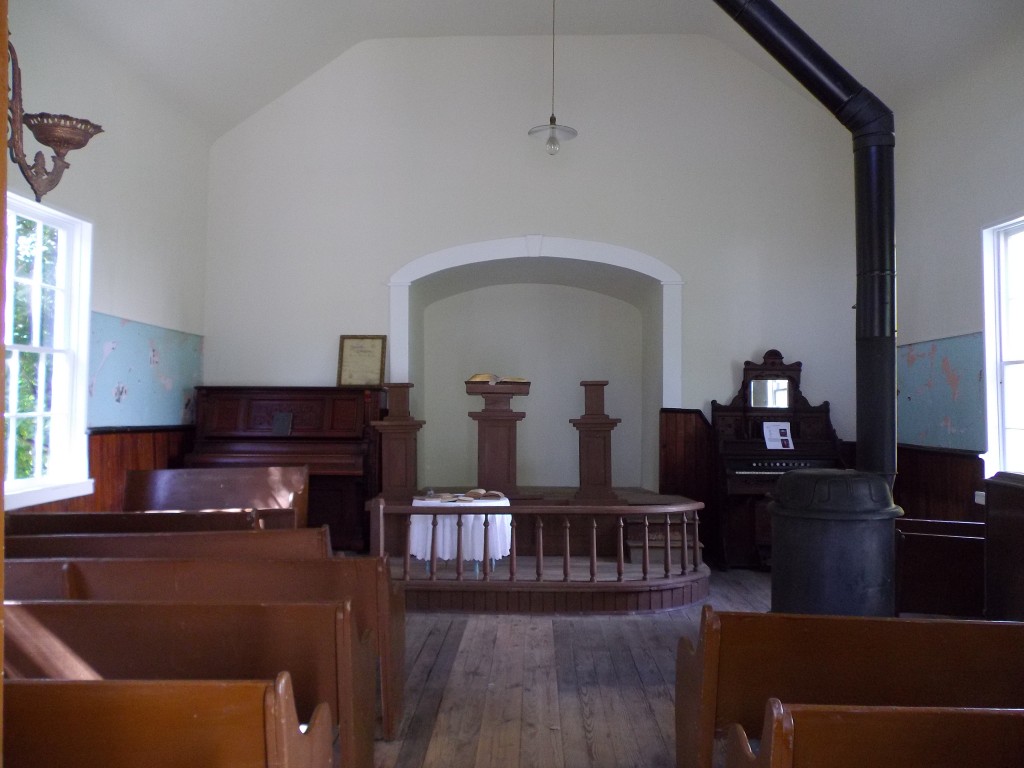 2012 – Tolson’s Chapel exterior and interior restoration substantially complete.
2012 – Tolson’s Chapel exterior and interior restoration substantially complete.
